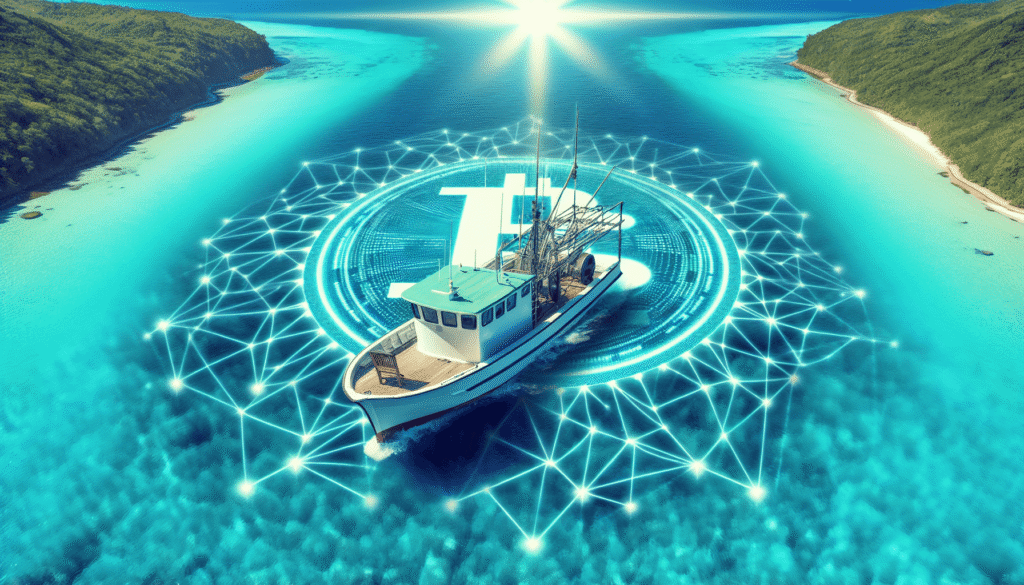Have you ever wondered how the world of cryptocurrencies might intersect with sustainable fisheries? It’s a fascinating connection that blends cutting-edge technology with the urgency of environmental conservation. Let’s delve into this captivating topic and see how you—and the fish in our oceans—stand to benefit.
Understanding Sustainable Fisheries
Before we can explore the role of crypto in sustainable fisheries, it’s important you understand what sustainable fisheries are all about. Simply put, they aim to manage fish stocks in a way that maintains healthy populations and environments. This ensures that fish can continue to be a sustainable food source, providing benefits to local communities and global consumers without depleting the resources for future generations.
The Principles of Sustainable Fisheries
There are three main principles that guide sustainable fisheries:
-
Environmental Integrity: This involves ensuring that fish populations are healthy and can continue to reproduce. It also means maintaining the quality of their habitats and the overall health of marine ecosystems.
-
Economic Viability: A fishery must be able to sustain itself economically to be sustainable. This involves fair wages, stable jobs, and profitable enterprises for those involved in the seafood supply chain.
-
Social Equity: Sustainable fisheries must support the communities that rely on them, both culturally and economically. This includes equitable access to resources and decision-making processes for all involved stakeholders.
With these principles in mind, you might wonder—how does crypto fit into the picture?
The Role of Cryptocurrency in Today’s Economy
Cryptocurrencies like Bitcoin and Ethereum have gained immense popularity in recent years. They offer decentralized, digital currencies that function without a central authority. While many people know them as vehicles for investment, their underlying technology, blockchain, offers much more potential, especially in ensuring traceability and transparency.
Blockchain: The Backbone of Crypto
Blockchain technology is a decentralized ledger that records transactions across numerous computers. This ensures that the record is secure, transparent, and nearly impossible to alter, which could offer significant benefits to sustainable fisheries.
Cryptocurrencies: More Than Digital Money
You might think of crypto simply as digital cash, but its uses extend far beyond purchasing power. Cryptocurrencies can incentivize sustainable practices, provide funding for conservation efforts, and create systems of accountability in industries prone to opacity and exploitation, such as fisheries.

The Connection Between Crypto and Sustainable Fisheries
You may already see some ways in which these worlds could connect. By integrating blockchain technology and cryptocurrencies, sustainable fisheries can achieve a new level of transparency and efficiency. Here’s how it might work:
Ensuring Transparency and Traceability
One of the biggest challenges in fisheries is tracing seafood from catch to consumer. Illegal, unreported, and unregulated fishing often undermines sustainability efforts, damaging marine environments and local economies. Blockchain can offer solutions here by creating an immutable record for each step of the supply chain. This means that every fish caught, processed, and sold is recorded on the blockchain, allowing you, the consumer, to verify its origins and sustainability credentials.
Rewarding Sustainable Practices with Crypto
Imagine a system where fishers are rewarded with cryptocurrency for sustainable practices. These tokens could be used within their communities or exchanged for traditional currency. This creates a direct financial incentive for fishers to engage in environmentally friendly practices, ensuring that both the environment and their own livelihoods are protected.
Raising Funds for Conservation
Cryptocurrencies can also serve as a powerful tool for raising funds. Crowdfunding platforms that accept crypto can help finance conservation projects, research, and community initiatives, especially in areas where traditional funding is scarce. Being part of this innovative approach, you’re contributing to a world where fish populations and marine ecosystems are thriving.
Current Projects and Case Studies
Several initiatives around the world are already exploring the potential of crypto in fisheries. Let’s examine how they’re making strides in this new frontier.
The Fishcoin Project
Fishcoin is an exciting initiative designed to incentivize sustainable practices throughout the seafood supply chain. By using blockchain technology, Fishcoin tracks the journey of seafood from ocean to plate. Consumers can verify the sustainable practices used, and fishers are rewarded with cryptocurrency for providing data. This creates a transparent and accountable system that benefits all parties, ensuring that the seafood you consume is truly sustainable.
The Poseidon Foundation
The Poseidon Foundation is another fantastic example of how blockchain can contribute to sustainable fisheries. They use blockchain to link carbon credit markets to consumers in various sectors, including fisheries. By making sustainability a financially rewarding endeavor, Poseidon Foundation’s initiatives aim to drastically reduce carbon footprints and promote environmentally friendly practices.
Provenance and Fair Trade Shopping
Provenance relies on blockchain to ensure that every step of a product’s supply chain is transparent. Similar to how you would scan a QR code for more information, Provenance lets you see where, when, and by whom products were sourced, and under what conditions they were produced. If you care about sustainability and ethical sourcing, this is an invaluable tool that empowers your purchasing decisions.

Challenges and Considerations
While you might be excited about the possibilities, there are challenges and considerations to keep in mind. Here are some potential barriers this intersection might face:
Technological Barriers
Implementing blockchain technology isn’t without challenges. Many fisheries are located in areas with limited access to digital infrastructure. You might ponder how these technologies can be integrated into regions where basic internet access is a barrier.
Economic Access
For fishers in low-income regions, the cost of adopting new technologies can be prohibitive. In a world where not everyone has access to smartphones or digital literacy, rolling out such systems can be a daunting task.
Regulatory Challenges
Navigating regulatory frameworks is another complex task. How will governments adapt to this new integration of fisheries and crypto? Ensuring that these technologies meet regulatory standards globally can be a lengthy process.
Environmental Concerns
Cryptocurrency mining and blockchain technology have been criticized for their environmental impact due to high energy consumption. It’s a complex trade-off when focusing on sustainable practices in one domain while potentially harming another. Nevertheless, advancements are being made toward eco-friendly blockchain solutions.
The Future Outlook
Despite these challenges, the potential for crypto in sustainable fisheries remains exciting and boundless. So what’s next on the horizon?
Innovations in Eco-friendly Blockchain Solutions
Already, companies are innovating eco-friendlier blockchain solutions. These technologies use less energy and offer scalable solutions for industries like fisheries. As these technologies continue to improve, you’ll likely see even more integration into mainstream markets.
Wider Adoption and Awareness
With increased awareness and understanding, sustainable fisheries could see wider adoption of blockchain and crypto technologies. As a consumer, your demand for transparency and sustainability can drive these industries toward adopting such solutions more globally.
Synergy with Global Sustainability Goals
With the global focus shifting toward sustainability, integrating crypto solutions in fisheries could align with larger goals like the United Nations’ Sustainable Development Goals. This not only supports environmental targets but also impacts economic and social equity across the globe.
Collaboration Across Sectors
Partnerships between tech companies, environmental organizations, governments, and local fishers can foster innovation and eliminate barriers to adoption. These collaborations can bridge the gap between technology and resources, allowing for a more seamless integration into the fisheries sector.
Conclusion
While the marriage of crypto and sustainable fisheries may seem unconventional, it holds immense promise. By promoting transparency, incentivizing sustainable practices, and raising funds for conservation, cryptocurrency can be an ally in the fight for healthier oceans and fish populations. Though challenges remain, your awareness and action can help make this vision a reality. The future is not just in your hands but in the oceans’ depths, and together, we can strive for a harmonious balance.
As you continue to explore the possibilities of crypto’s role in sustainable fisheries, remember that every choice you make, from where and how you purchase fish, to the investments you support, can contribute to a brighter, more sustainable future.

